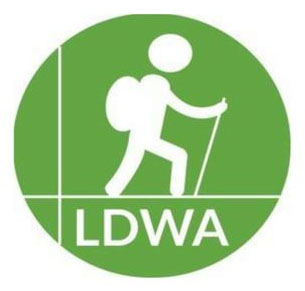

Home Preamble Index Areas Map References Me Drakkar

Looking up the Lune valley from the old railway line
I set out first to investigate thoroughly the gender of local walkers. I walked along the old railway line, which is the most popular walk for local walkers, since it is flat, sheltered and requires no map-reading skills. It was a bright but cold Monday morning with wisps of snow in the air, so I didn’t expect a great number of walkers – but I duly recorded them all as I strolled along. I intended to walk as far as the Lancaster Canal and back but I found that the path was still closed at the motorway bridge because of seemingly never-ending flood defence work. Undeterred, I continued on the road because I wanted to see if the canal, at least, was back in action. The last time I looked it was drained for repair work but now it was full of water, with a layer of ice. From the aqueduct I could look wistfully up the valley to a freshly snow-capped Ingleborough. As regards an analysis of hill-walkers, the Long Distance Walkers Association (LDWA) helpfully
maintains a
register
of all those walkers who tell them that they have achieved various challenges. In particular, it has a list
of those who have registered as ‘Wainwright completers’, that is, people who have walked to the top of all
the 214 Lake District hills described in Wainwright’s books. It boldly labels them as ‘M’ or ‘F’.
I can report that of the 856 names (at the time of writing) 76% are male and 24% are female.
As regards an analysis of hill-walkers, the Long Distance Walkers Association (LDWA) helpfully
maintains a
register
of all those walkers who tell them that they have achieved various challenges. In particular, it has a list
of those who have registered as ‘Wainwright completers’, that is, people who have walked to the top of all
the 214 Lake District hills described in Wainwright’s books. It boldly labels them as ‘M’ or ‘F’.
I can report that of the 856 names (at the time of writing) 76% are male and 24% are female.
Single Paired Grouped
Male 461 101 87
Female 83 101 23
Isn’t that fascinating? Most (71%) of the male completers are single. Most (60%) of the
female completers are not single. In fact, nearly half (49%) of the females are paired. Of all
singles, 85% are male. Of all completers, not quite 10% are single women. I appreciate that
Wainwright completers are a rather special breed of walker and I daren’t speculate much. But does
it suggest that men are more likely to walk on the hills alone? And that women are more likely
to walk paired? If so, we two are stereotypical: I often walk alone on the hills and Ruth very
rarely walks on the hills without me.

The River Lune approaching the M6 bridge
I returned from the canal the way I came, somewhat jaded and uninspired but determined to continue my assiduous analysis of the local horizontal walkers. Before presenting the results in the above format, I must point out that the LDWA register, helpful though it is, is remiss in one respect. It doesn’t mention dogs. Clearly, some hill-walkers walk with dogs – and some dogs must have completed the Wainwrights. They are not allowed to register the fact, which seems unfair. I, however, can record the dogs, which is no more than they deserve since there are plenty of them on our footpaths.
S S+Dog P P+Dog G G+Dog
M 15 9 15 2 0 4
F 12 12 15 2 8 9
Of the 103 walkers that I recorded, 58 (56%) were women, supporting my suspicion that most local walkers are women.
Most (53%) of the men were single and most (59%) of the women were not single, as was the case for the hill-walkers.
I am pleased to see that our local men are more chivalrous: 38% were paired, compared to 16% for the hill-walkers.
Sadly, they also seem to be somewhat friendless (unless you count their pair as a friend): there
were 0 all-male groups, compared to 7 all-female groups.
Pairs are content with one another for company: only 12% of them had a dog, whereas 44% of the singles did.
Of the 103 walkers, 38 (36%) were accompanied by one or more dogs. The total number of dogs seen was 31. As the
best academic papers say, these
interesting preliminary results need further investigation.
Home Preamble Index Areas Map References Me Drakkar
© John Self, Drakkar Press, 2018-

Top photo: The western Howgills from Dillicar; Bottom photo: Blencathra from Great Mell Fell